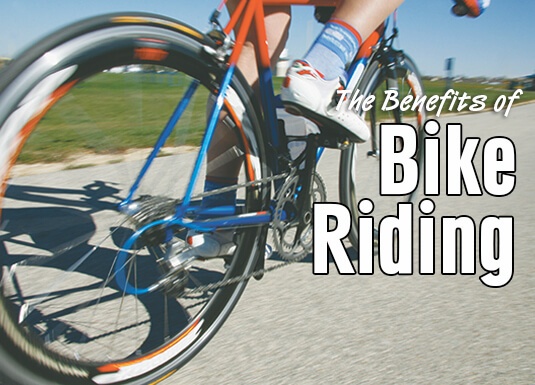 With summer quickly underway, it is important to make the most of one’s summer with outdoor recreation. Bike riding offers a perfect balance of cardio and strength training for individuals of all ages. With a multitude of beautiful trails in the area, bike riding should be one of the activities on your summer bucket list.
With summer quickly underway, it is important to make the most of one’s summer with outdoor recreation. Bike riding offers a perfect balance of cardio and strength training for individuals of all ages. With a multitude of beautiful trails in the area, bike riding should be one of the activities on your summer bucket list.
The American College of Sports Medicine, recommends that all healthy adults aged 18 to 65 years old should be partaking in a moderately intensive aerobic physical activity for 30 minutes at least 5 days a week. An easy way to achieve this goal is by riding to and from school, local parks, a friend’s house, or work each day. By partaking in a 30 minute aerobic activity 5 days a week, one is greatly reducing their risk of cardiovascular disease. The Center for Disease Control acknowledges that individuals who regularly participate in physical activities, like biking, are more likely to lose or maintain their current weight. Not only does bike riding help reduce one’s risk of cardiovascular disease, but it also provides an activity for all ages.
Bike riding is considered a low impact activity, which means it causes less strains and injuries than most other activities. Individuals of all ages can utilize this sport as an aerobic activity due to its low impact. The American College of Sports Medicine has found bike riding to provide minimal stress to one’s hip, knee, and ankle joints. Bike riding allows individuals who otherwise would be sedentary to actively participate in a healthy activity.
Safety is of course an important concern when one participates in a physical activity. The most import safety measure one can take while riding a bike is to wear a helmet. According to Safe Kids Worldwide, bike helmets reduce head injuries by 85 percent. With such a significant reduction in injuries, no one should be riding a bike this summer without a properly fitted bike helmet. Here are four quick and easy steps, from the National Highway Traffic Safety Administration, to ensure your helmet is fitting properly:
- Fit: Make sure your helmet is snug. Most helmets have sizing pads or a fit rig that can be adjusted.
- Position: Your helmet should sit level on your head and low on your forehead. It is recommended your helmet sits one or two finger-widths above your eyebrows.
- Side Straps: Adjust straps to from a, “V,” under and slightly in front of your ears.
- Buckles: Make sure to center the left buckle under the chin. Most helmets have straps that can be lengthened or shorten for ease of adjustment. Once buckle is centered, tighten chin strap until snug; no more than one to two finger should fit under the strap.
In addition to a bike helmet, there are a few safety checks to keep in mind before bike riding this summer:
- Check to make sure your tires are at the correct air pressure. Air pressure is often lost in tires over the course of the winter and may need to be refilled to prevent injury.
- Check your bike chain to ensure it is not overly rusted and sits snugly on one’s crank wheel.
- Check your derailleur and brakes. The derailleur is responsible for a bikes shifting and becomes important when going up and down hills. Examine the cables to and from the derailleur and brake pads to ensure no frays exist. Test one’s bikes shifting and stopping abilities over a short distance before taking ones bike on a long trip.
Whether it is on local trails or commuting to work, keep these safety measures in mind to have a safe and enjoyable ride on your bike this summer!
References
- “Bike and Helmet Safety Policy Brief.” SafeKids. Children’s National Health System, n.d. Web. 13 June 2016.
- Erica Marken. “Just You and the Bike.” ACSM Certification. American College of Sports Medicine, 23 October 2013. Web. 13 June 2016.
- “Physical Activity and Health.” CDC. Centers for Disease Control and Prevention, 04 June 2015. Web. 13 June 2016.
- “Physical Activity and Public Health Guidelines Frequently Asked Questions and Fact Sheet.”ACSM. American College of Sports Medicine, n.d. Web. 13 June 2016.
- “Fitting Your Bike Helmet.” National Highway Traffic Safety Administration, April, 2012. Web. 14 June 2016.
